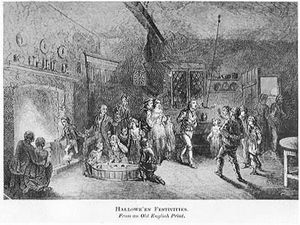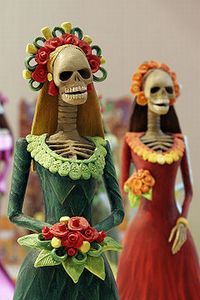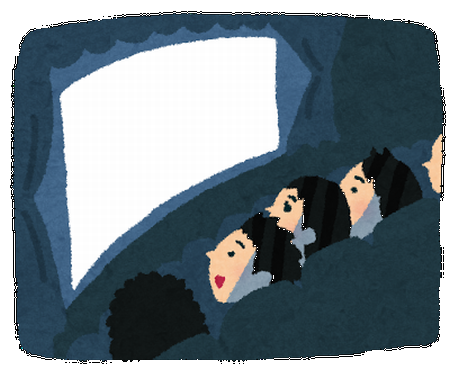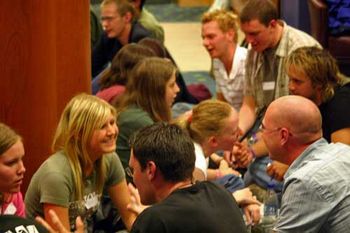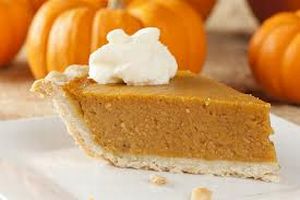Halloween, also less commonly known as All Hallows’ Eve, is an annual holiday celebrated in many countries throughout the world on October 31st.
Although its beginnings are shrouded in mystery, many scholars believe that Halloween originated as a Christian feast day that was influenced by Autumn harvest festivals and possibly pagan festivals of the dead, much like Obon in Japan.
ハロウィンは毎年10月31日に多くの国々で祝われる、年に一回の祝日で、元々はあまり知られていないけど、「All Hallow(11月1日の諸聖人の日)のイブ(前夜)」なのです。
始まりは謎に包まれていて、多くの学者は、ハロウィンは10月の収穫祭と死者を祀る宗教的お祭り(日本でいうお盆)に影響を受けたキリスト信者の祝祭日が起源だとしています。
In North America and many other parts of the world, people make Jack-O-Lanterns by carving out faces or other designs in pumpkins and placing lights or candles inside.
Traditionally, candles were placed inside Jack-O-Lanterns to frighten away evil spirits.
In countries such as Scotland and Ireland, people used turnips Jack-O-Lanterns, but when the tradition came to North America people began to use pumpkins, due to their larger size and softer texture.
In a popular Irish Christian folktale, after tricking the Devil, a wicked man named Jack was denied entrance to both Heaven and Hell.
He was left to wander the earth with only a hollowed turnip with a burning coal inside to guide his way.
北アメリカと世界の多くの国々の人々は、かぼちゃで顔やデザインを掘ってジャックランタンを作ったり、かぼちゃの中にライトやキャンドルを置いたりします。
悪魔を退散させるためにジャックランタンの中にキャンドルを置くのが伝統です。
スコットランドやアイルランドでは、人々はカブを使ってジャックランタンを作っていましたが、北アメリカの人々が、大きなサイズとより削りやすいやわらかい皮のかぼちゃを使い初めたのです。
有名なアイリッシュキリスト民話では、悪魔がいたずらをした後、邪悪なジャックは天国と地獄両方から受け入れられてもらえませんでした。
彼は自分自身の道標となるように、燃えている石炭が入ったカブを持って地球のあちらこちらを彷徨いました。
Children dress up in costumes of various horror-related monsters and ghosts, as well as various professions or characters in popular culture such as astronauts, pilots, flight attendants, nurses, doctors, super-heroes, royalty, celebrities, animals, and so forth. In their costumes, they go from door to door in neighborhoods, knocking on doors and saying “Trick or Treat!” to receive candy.
Dressing up has also become popular among adults, who either accompany children who go trick-or-treating or go to parties for grown-ups.
子どもたちは様々な恐ろしいモンスターやお化けのコスチュームを着たり、有名な文化や様々な専門的なキャラクターを着る人もいます。
例えば、宇宙飛行士、パイロット、フライトアテンダント、ナース、医者、スーパーヒーロー、王様、貴族、動物などです。
コスチュームを着て、子供達は沢山の家を訪れ、ドアをノックし、「トリック・オア・トリート!」と言って飴を受け取ります。
着飾ることは大人たちの間でも人気であり、保護者が子供に付き添って一緒にお菓子をもらうか、もしくは大人限定のパーティに行きます。
Japanese Obon is very similar to the Day of the Dead, (or “Dia de los Muestos” in Spanish), a Mexican holiday celebrated on November 1st and 2nd. During this time, people in Mexico and other parts of the world welcome back the souls of their ancestors and relatives who have died.
People honor deceased family members and friends by decorating house-hold altars and graves with flowers, favorite dishes, and skulls-shaped sweets made out of sugar.
日本のお盆は死者の祭りととても似ています。(スペイン語では” ディア デロス モエルトス“です。)
11月1日、2日は有名なメキシコの休日です。この2日間は、メキシコの人々と世界各国の人々は先祖や自分と関わりのあった死者の魂が戻ってくることを歓迎しています。
亡くなった身内や友人の神棚やお墓に、お花や生前の好物、砂糖で作られた髑髏等を飾ることによって亡くなった身内や友人達に敬意を払います。
Please let your next lesson partner know if you’re interested in Halloween and they might be able to provide you with some interesting information or recommendations for how to spend this delightfully frightful holiday!
もし皆さんがハロウィンに興味を持ってくれたなら、次回のレッスンで僕達に教えてください!そうしたら、僕達パートナーは面白い情報や楽しくて驚くような過ごし方を教えることができるかもしれません。
Peter
Happy Halloween!






